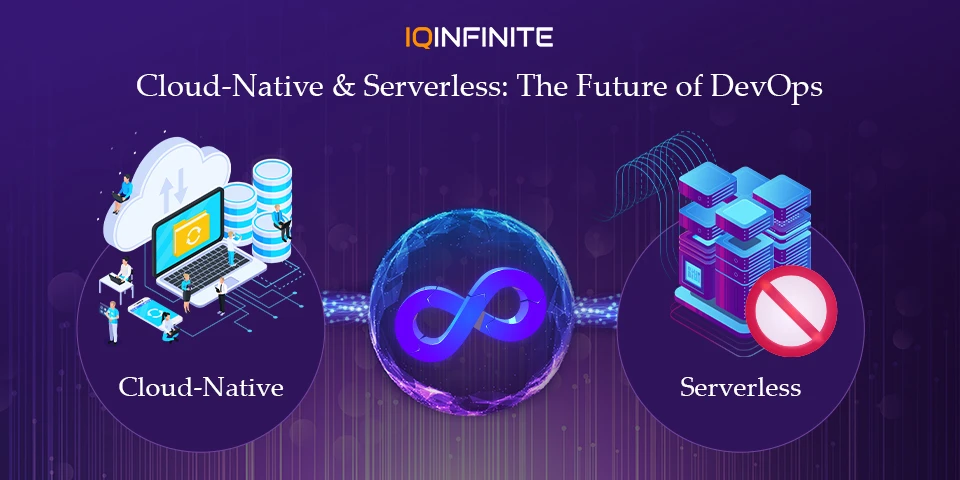Why Cloud-Native & Serverless DevOps is the Future of Business Infrastructure

In the last decade, the way businesses build, deploy and scale applications has undergone a dramatic transformation. Gone are the days when enterprises relied heavily on on-premise servers and rigid, monolithic systems. Today, agility, scalability and cost-efficiency drive modern business infrastructure and that’s where cloud-native and serverless DevOps come in.
These models are not just technological upgrades, they represent a fundamental shift in how organizations approach software delivery. By embracing cloud-native principles and serverless architecture, companies can accelerate innovation, optimize resources and stay ahead in a fast-changing digital marketplace.
Understanding Cloud-Native and Serverless DevOps
Cloud-Native Development
Core traits of cloud-native applications include:
1. Microservices architecture: breaking applications into smaller, independent services for flexibility and scalability.
2. Containerization: ensuring consistency across development, testing and production environments.
3. CI/CD pipelines: enabling rapid, reliable and automated release cycles.
4. Kubernetes & orchestration tools: managing workloads efficiently and at scale.
This model empowers businesses to innovate faster while maintaining agility in an increasingly competitive market.
Serverless DevOps
Key benefits of serverless computing include:
1. Pay-as-you-go pricing: no costs for idle resources, you only pay for actual usage.
2. Automatic scaling: applications scale up or down seamlessly based on demand.
3. Faster development cycles: infrastructure is abstracted, allowing teams to deliver features quickly.
4. Minimal maintenance overhead: IT teams spend less time managing servers and more time driving innovation.
Serverless DevOps combines these advantages with automation, monitoring and CI/CD pipelines, creating an environment where businesses can release reliable applications at lightning speed with reduced operational complexity.
Why Businesses Are Moving Toward Cloud-Native & Serverless DevOps
In today's competitive world, speed is everything. Cloud-native DevOps combined with serverless models enables businesses to:
• Roll out updates multiple times a day instead of quarterly.
• Experiment with new features quickly.
• Respond to customer feedback faster.
2. Cost Efficiency
Traditional infrastructure requires upfront investments in hardware, storage and maintenance. In contrast:
• Serverless ensures you pay only for what you use.
• Cloud-native reduces downtime costs through automation and resilience.
• DevOps practices minimize wasted resources by streamlining processes.
3. Scalability Without Limits
Whether you’re a startup handling 100 users or an enterprise with millions of requests per second:
• Serverless functions auto-scale instantly.
• Cloud-native applications can scale horizontally with Kubernetes.
• This ensures businesses never lose opportunities due to infrastructure bottlenecks.
4. Improved Security and Compliance
Leading cloud providers embed advanced security features like:
• Automated patching and updates.
• End-to-end encryption.
• Compliance with global regulations (GDPR, HIPAA, ISO).
DevOps pipelines also integrate security checks (DevSecOps) early in development, ensuring safer releases.
5. Business Resilience and Continuity
With serverless and cloud-native approaches, outages are minimized. Even if one service fails, microservices architecture ensures the rest of the application remains functional. This guarantees high availability and disaster recovery without heavy investments.
How DevOps Ties Everything Together
- Faster delivery: Ideas move from code to production in hours not months.
- Seamless collaboration: Development, operations and security teams work as one.
- Continuous improvement: Real-time monitoring and feedback loops drive better products and happier customers.
Conclusion
Cloud-native and serverless DevOps are not just buzzwords they represent the foundation of modern business infrastructure. Companies that embrace these models gain unmatched flexibility, cost savings and resilience, enabling them to thrive in the digital-first era.
Businesses that delay the shift risk falling behind competitors who are already leveraging these innovations to scale smarter and faster. The future of business infrastructure is here and it’s cloud-native, serverless and powered by DevOps.
